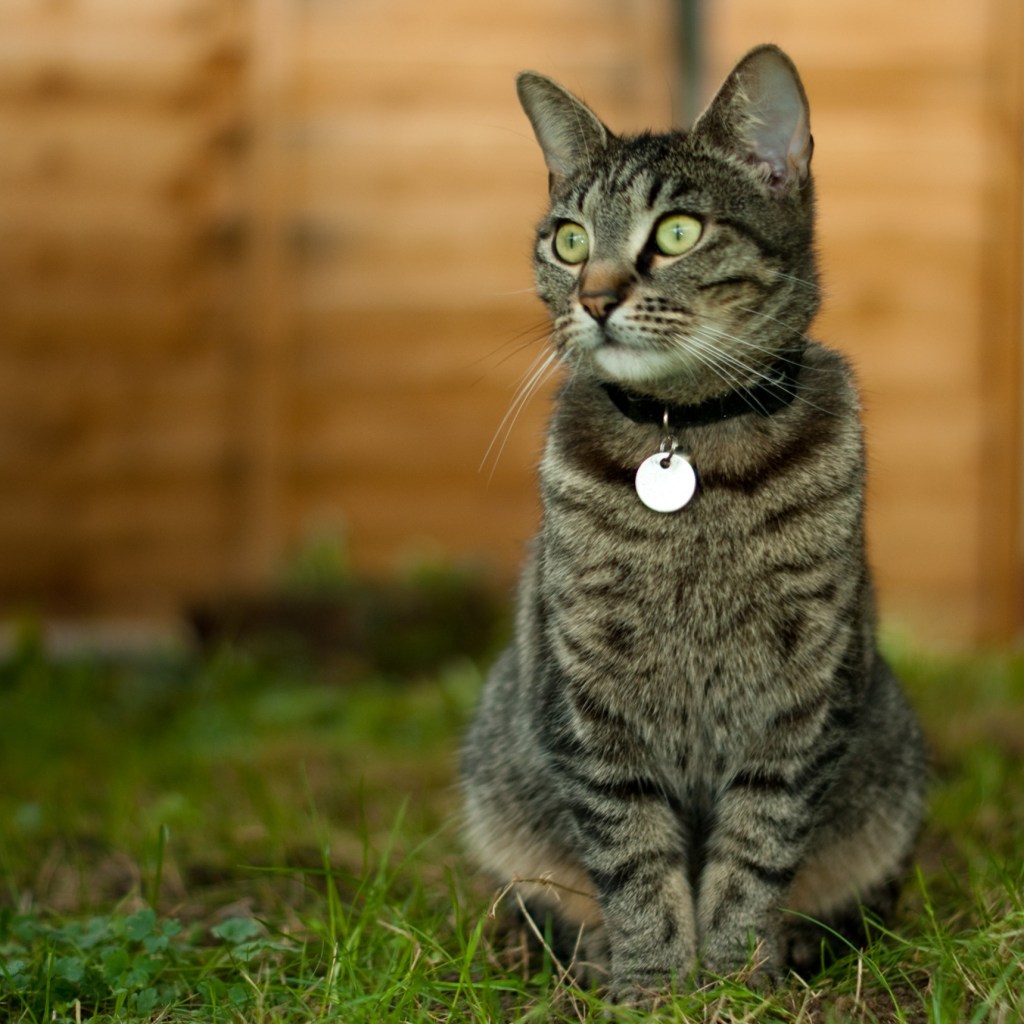Whether your cat stays indoors or spends time outside, your cat needs a collar. A collar with an ID tag is an essential piece of gear to help get your cat home safely should he wander away. There are several types of cat collars, and here are a few things you should consider when choosing one.

Get the right size collar
Your cat’s collar should fit correctly both for safety and comfort. You should be able to slip two fingers underneath your cat’s collar without much issue. This method helps ensure your cat can breathe but cannot slip out of the collar.
To find the right size, measure around your cat’s neck with a cloth tape measure. Choose a collar size that fits your cat’s neck measurement and offers adjustments for the right fit. If your cat is between sizes, it’s best to go down a size and then adjust to the biggest setting. Going up a size could make the collar too bulky.
Types of collars
You can choose from a range of collars to help your cat. Different materials are suitable for different circumstances. Here are some common types.
• Woven material — A woven material such as nylon is lightweight and provides a durable collar that can hold up to a variety of environmental factors. It dries quickly and wipes down easily.
• Leather — Leather is an excellent fashion statement and is typically flexible enough to provide good movement. Make sure you choose a thin collar with soft leather on the interior for comfort.
• Flea collars — A flea collar can help keep away random household fleas, but you should always check with your vet before purchasing a flea collar.
• High-tech collars — Some collars offer a bit of tech to help you track your cat’s movements. If your cat is known to wander, this could be an excellent way to ensure you always find your cat. Some also help cats open cat doors or provide information to a vet should your cat get lost.
• Breakaway collars — Breakaway collars have a unique link that literally breaks under pressure. They can help prevent your cat from getting snagged or trapped by something that may cause injury or death. If you have an outdoor cat, this type of collar might be worth considering.
Adding to your collar
Adding pieces to your cat’s collar can help with a variety of issues. Some collars have identification tags that hang from the collar or are sewn directly onto the collar. The ID tags improve your chances are having your lost cat returned quickly.
Some cat owners attach a bell to the collar of their indoor cat. When the cat goes outdoors, the bell alerts birds that the cat is nearby.
Vaccinations are required in some states, so it makes sense to hang the current vaccination tag from our cat’s collar. The vaccination tag can help veterinarians know how to treat a lost pet and could help save your cat if animal control finds it first.
Look at your purpose
If you’re walking your cat on a leash outdoors, a harness could be better for your cat than a collar. You’ll want to find one that is durable yet comfortable for your cat to wear. If you’re just looking to get rid of fleas, a flea collar could do the trick.
Take a good look at what your purpose is for purchasing a collar for your cat. The options will have to determine the type of collar you choose. If you’re doing it for aesthetics only, we recommend leaving your cat uncollared. However, there are some excellent reasons for placing a collar on your cat.
Frequently asked questions
You may still have some questions about your cat’s collar. We’ve covered a few of them below.
• Do cats get used to collars? Cats aren’t as people-pleasing as dogs, but they can still get used to collars over time. A collar can help with identification and preserve local birdlife. With consistency and patience, you can get your cat used to wearing its collar.
• Is it cruel to attach a bell to your cat’s collar? Wearing a bell all the time can be detrimental to your cat because the sound is annoying. However, wearing a bell collar is useful for when your indoor cat goes outdoors. Cats are natural predators so a bell can alert birds and prevent your cat from stalking them.
• Should I take my cat’s collar off at night? It’s fine to remove the collar at night so that your cat is more comfortable. While your cat is adjusting to the collar, it may be best to leave it on all the time. However, if you have concerns about your cat’s safety or comfort, It’s always best to remove it.
Getting your cat used to the collar

Many cats can get used to the collar easily with consistency and time. Collars provide a way for your pet to be identified should he escape or get lost. Outside cats can also benefit from having identification so neighbors will know they belong to you.
It’s a good idea to consider the materials of your cat’s collar carefully and do what you can to ensure your cat is comfortable and safe. You can blend these two goals to find the right collar for your cat.


